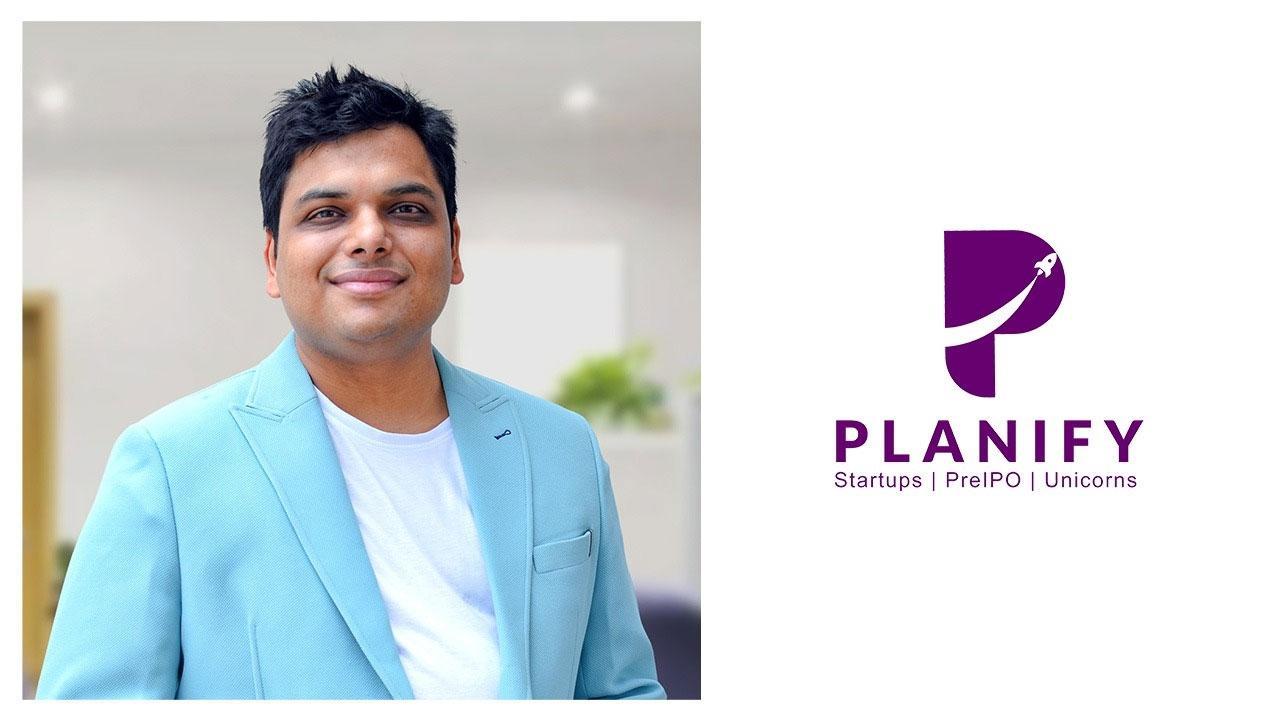The core vision of our Venture X Fund is to focus on Small and Medium Enterprises (SMEs), which are often underrepresented in traditional investment avenues.

Rajesh Singla, Founder & CEO of Planify
In an exclusive interview, Rajesh Singla, Founder & CEO of Planify, delves into the intricacies of investing in the SME sector, highlighting the vision behind the Venture X Fund and its unique value proposition. Throughout the conversation, he emphasises the potential of SMEs to outperform more significant indices and shares Planify’s strategic approach towards identifying, evaluating, and investing in high-growth companies. From discussing the MLVC framework to outlining the meticulous due diligence process that sets them apart, Rajesh provides a comprehensive look into how Planify bridges gaps in the investment landscape for early-stage businesses.
ADVERTISEMENT
1. Can you briefly explain VentureX Fund's core vision and unique value proposition? What gaps does it address in the current investment landscape?Rajesh Singla: The core vision of our Venture X Fund is to focus on Small and Medium Enterprises (SMEs), which are often underrepresented in traditional investment avenues. Our fund targets SMEs that are either about to be listed or are already listed on the Nifty SME Emerge or BSE Small Index, providing a unique opportunity for early-stage investment in high-growth companies. Over the past few years, these indices have consistently outperformed the Nifty 50 and the Nifty Small Cap over the past few years. Our goal is to identify and invest in SMEs that show potential for significant growth, offering investors an entry as anchor investors during IPOs, a strategy that has historically yielded higher returns.
2. How does the Venture X Fund evaluate exit strategies for its portfolio companies?
Rajesh Singla: We leverage our experience at Planify, where we have already executed 33 successful exits before launching VentureX. Our approach includes entering the market early, ensuring attractive valuations, and exiting when the company transitions from SME status to the main board or achieves its growth targets. The main motto is to get into a business between 100 to 500 cr of valuations and ride it to 10,000 cr of Valuations. Our compounded annual growth rate (CAGR) has been around 113% in these investments, far outperforming typical mutual fund returns. Our strategy involves identifying undervalued SMEs with strong business models and capable leadership teams and scaling our investments as these companies grow.
3. Can you share a success story to illustrate your approach?
Rajesh Singla: One notable example is our investment in Share India, which got listed on the SME exchange in 2017. We entered early when it was still a small-scale operation, and today, its net worth has grown to 3.97 crores from an initial 10 lakh investment. Similarly, investments in companies like CDSL, Avenue Supermart, Anandrathi, and the Bombay Stock Exchange have delivered exceptional returns due to our focus on early-stage investments.
4. What are the unique co-investment opportunities within VentureX, and how do they influence investor returns compared to traditional venture funds?
Rajesh Singla: We employ an MLVC framework for evaluating investments, focusing on Moat, Leadership, Valuation, and Consistency. Our co-investment opportunities allow investors to enter high-growth SMEs as anchor investors during their IPOs. They are a part of the listing process as anchor investors, giving us a first-mover advantage and helping secure shares at favorable valuations. We also maintain flexibility by sourcing additional shares from the secondary market if required.
5. What role does Planify’s VentureX Fund play in SMEs' governance and operational scaling?
Rajesh Singla: We take a hands-on approach by connecting companies with the right merchant bankers and assisting with equity restructuring and strategic partnerships. Our fund helps these SMEs professionalize their operations and prepare for growth through financial guidance, compliance support, and alignment with strategic investors who complement their business needs.
6. Can you explain your due diligence process and what factors lead to rejecting 95% of the companies you assess?
Rajesh Singla: Our due diligence involves Qualitative Analysis, Quantitative Evaluation, and Corporate Governance. This is called Forensic Due Diligence, where you go top to bottom to find out any issues in the company. We scrutinize a company’s business model, leadership quality, valuation, and cash flow consistency. For corporate governance, we check for any red flags like past non-compliance, related party transactions, and management integrity. Ultimately, only around 5% of the companies we evaluate meet our stringent criteria and are deemed suitable for investment.
7. How does Planify manage the risk in a highly volatile SME sector?
Rajesh Singla: Managing risk in the SME sector is crucial. We ensure that 5% of our total fund is allocated to a single company. This diversified approach minimizes exposure even if a few companies underperform. Additionally, we focus on investing in SMEs that show potential for scaling from a valuation of 100 crores to 500 crores to 10,000 crores. We monitor these companies closely and exit if growth slows or valuations become exorbitant.
8. How has the Indian regulatory landscape influenced the design of the Venture X Fund?
Rajesh Singla: The regulatory environment has evolved significantly, especially since SEBI introduced Alternative Investment Funds (AIFs) in 2012 and SME exchanges on BSE and NSE in 2013 and 2014, respectively. These regulations have opened new avenues for investors to participate in early-stage SME growth, which was previously missing. The government also supports this sector through policies like removing the Angel Tax and providing a smoother listing process for SMEs. However, more work is needed on the Employee Stock Option Plans (ESOPs) front to allow better monetization of employee holdings.
 Subscribe today by clicking the link and stay updated with the latest news!" Click here!
Subscribe today by clicking the link and stay updated with the latest news!" Click here!







